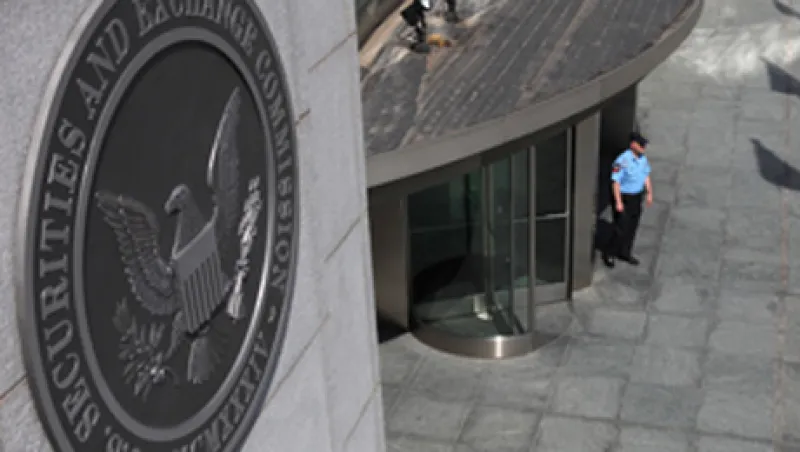The director of the Security and Exchange Commission’s Office of Compliance Inspections and Examinations, Carlo di Florio, tells Institutional Investor that his office – along with the office of Thomas Gira at the Financial Industry Regulatory Authority – is scrutinizing hedge funds and investment advisers that use high frequency trading strategies employing algorithms.
“In general, there’s been an increase in the algorithm and high frequency trading requests we’ve made of hedge funds and investment managers,” di Florio says. The information the SEC is looking for tends to be found in white papers and highly sensitive documents, he explains, so the agencies do not always have to look at proprietary computer code. However, he says, “We’re focused on looking for anything that would pose a risk to the investing public.”
More and more, algorithms are driving trading stategies. The SEC has jurisdiction over hedge funds and investment advisers. Finra does not. (Gira is executive vice president of Finra Market Regulation.) Yet they both oversee broker-dealers and coordinate their oversight by sharing information. For example, they look at how algorithms react to different market conditions and what data feeds the firms use.
The SEC examines the strategies that are touted in the marketing materials of investment advisers to make sure that they’re not straying from those strategies. Of course, trading firms that are engaged in market manipulation rise to the top, di Florio says, such as momentum ignition, where the trader would be driving interest in a lightly traded stock from which he or she would profit through market manipulation.
In mid-August, Finra announced a case of spoofing: placing small limit orders at prices that improve the national best bid and offer (NBBO) for a security, allowing the trader to take advantage of the improved prices by executing larger orders at another firm with execution guarantees at the NBBO. Once the larger order is executed at the artificially inflated price, the trader cancels the initial limit orders.
In this particular instance, spoofing artificially impacted the price of a Nasdaq Stock Market security. The trader attempted to conceal his improper trading activity through the use of one of his 11 undisclosed outside brokerage accounts; he was fined $175,000 and is required to pay restitution of $171,740 for engaging in manipulative trading activity.
There are two major reasons these agencies are zeroing in on “algos” and high frequency trading strategies. One is the “flash crash” of May 6, 2010, after which SEC chairman Mary Schapiro said regulators were investigating whether traders manipulated prices, encouraged volatility or committed fraud by flooding the market with rapid-fire orders that were almost immediately canceled. The other is the SEC’s new hires. Di Florio says the agency has brought in Ph.D.s in mathematics and experts in econometrics and computer science. One high-powered new hire is former hedge fund manager Rick Bookstaber. Di Florio says: “Yes, there’s an irony — we either hear that the SEC lacks the expertise to do the job or, now that we’ve hired the expertise, there are complaints that we shouldn’t do the job.”
Di Florio says that the SEC is aware that it is asking for highly sensitive information and that it keeps in mind the appropriate protocols for intellectual-property rights and abides by a strict code of ethics for the use of nonpublic information. “We’re sensitive to information security concerns,” he says. “Our objective is market integrity.”
The idea that an SEC staffer could walk out the door with firm secrets leaves some traders sweating. “It’s within the realm of possibility that a regulator could remember something he saw in a sweep and use it again in some way,” says James Overdahl, former SEC chief economist and now vice president at Nera Economic Consultants in Washington.
Di Florio says that with high frequency trading and algorithms being growing trends — with such trades now making up at least 50 percent of all U.S. stock trades – investment managers can expect the SEC to focus more on risks to ensure effective markets. “The flash crash brought high frequency trading and algorithms’ role into focus,” he says.
Traders are worried that such scrutiny is the tip of the iceberg. “Regulators have requested information from broker-dealers and hedge firms,” says former SEC economist Overdahl. “What seems clear is that they’re investigating suspicious market activity. Was there a surge in trading a stock that normally doesn’t attract that much attention?”
The SEC commonly does sweeps, says Overdahl. “I don’t get the impression that it’s looking for something specific, but that it’s more educational. There’s been some filtering, they’ve whittled down which types of firms to make the requests of, but the point is that they’re investigating something specific that happened in the market, and they aren’t saying what.”
Such information could be used to create new rules for electronic trading, he says.






